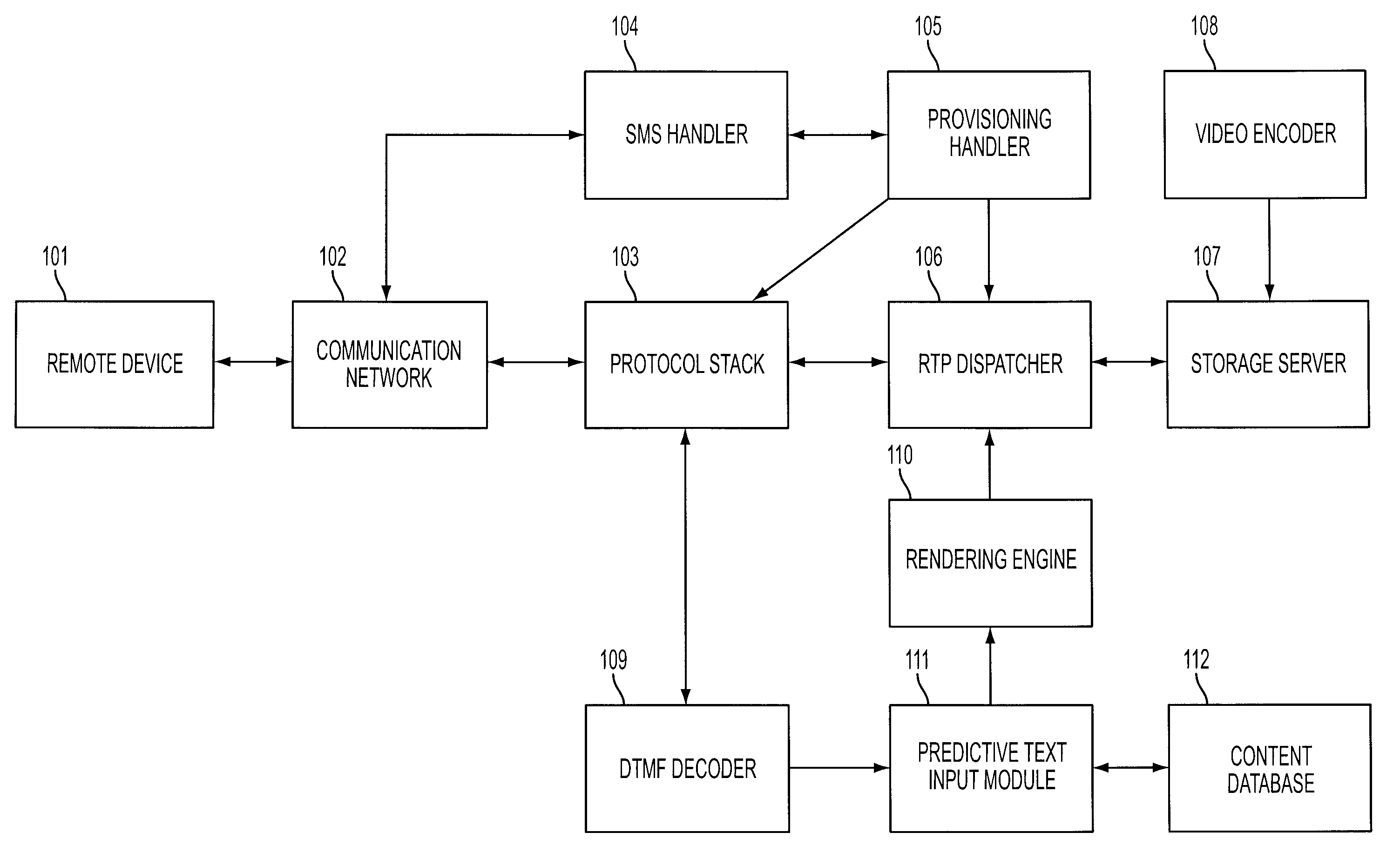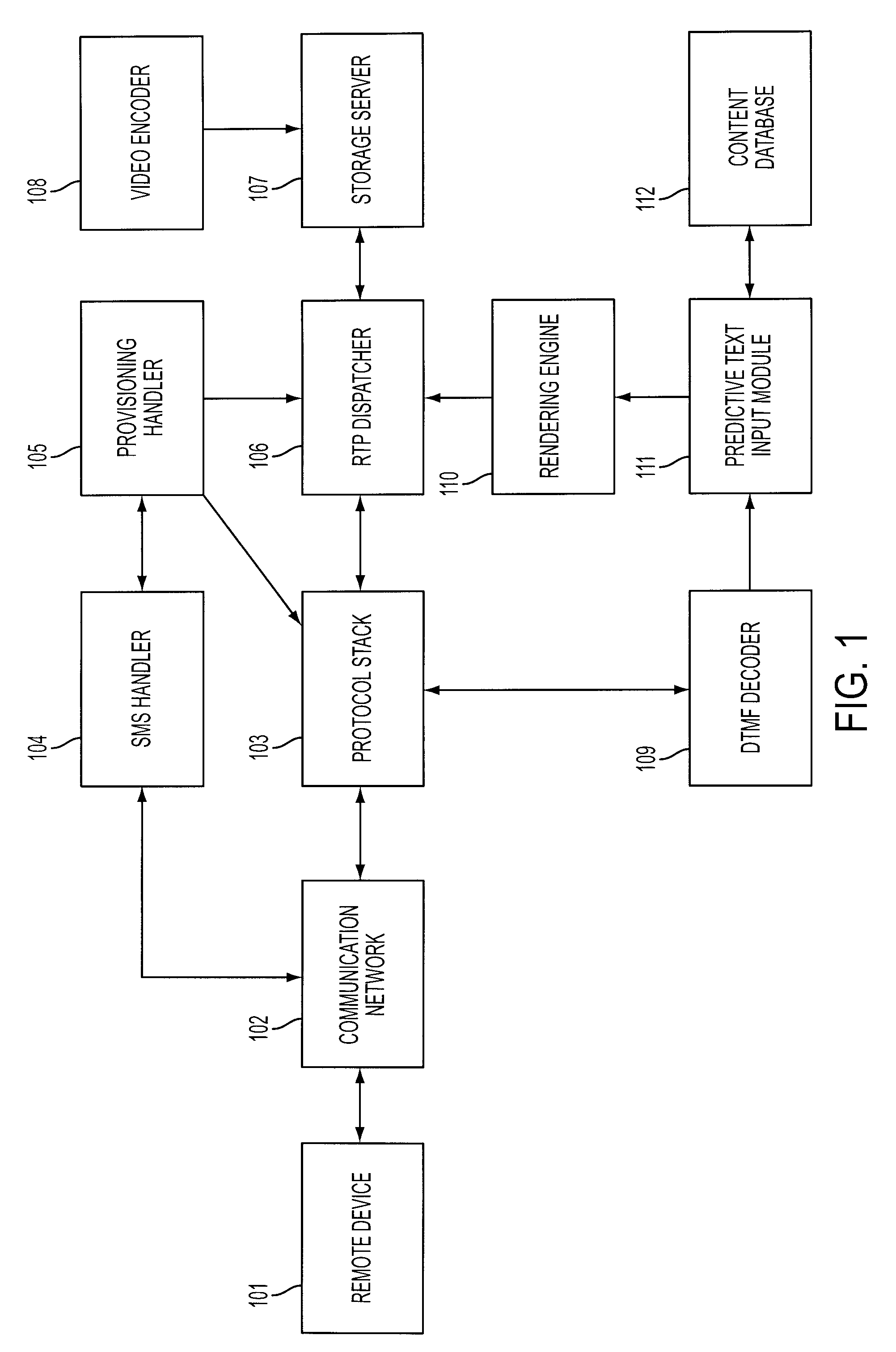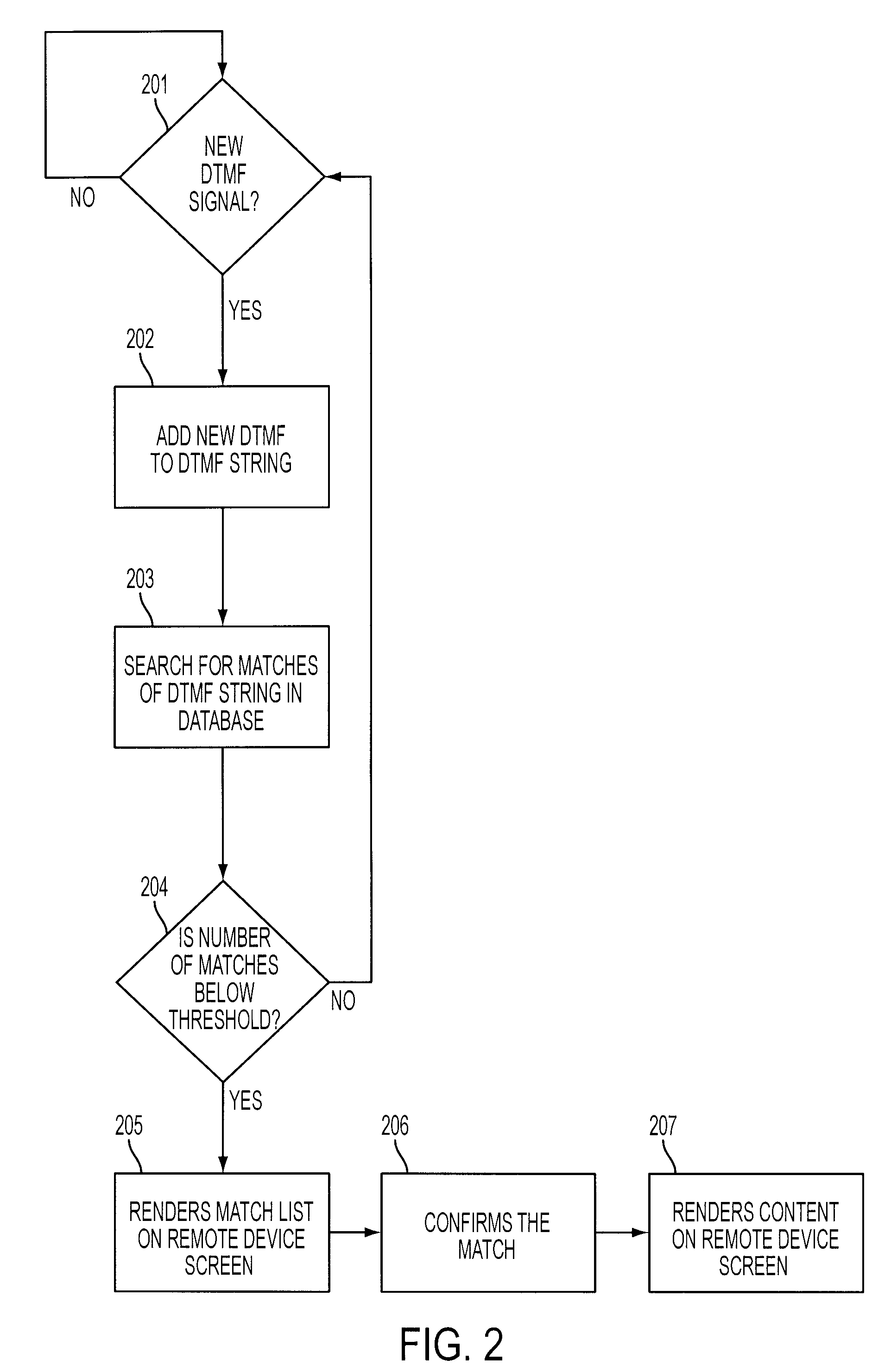System and method for video call based content retrieval, directory and web access services
a video call and content technology, applied in the field of content access and content search, can solve the problems of multiple screens, user confusion, time-consuming and expensive tag use, etc., and achieve the effect of reducing user error and typing effort, reducing keystrokes, and narrowing down the lis
- Summary
- Abstract
- Description
- Claims
- Application Information
AI Technical Summary
Benefits of technology
Problems solved by technology
Method used
Image
Examples
example 1
[0057]Web Access: A predictive text input system could be used to direct users to services and content based on existing URLs, phone numbers, or keywords. For example, in User Input 301 the user indicates his or her desire for a URL Retrieval of the Amazon Website, by entering “w-w-w-a-m-a-z . . . ” which in DTMF encoding appears as 9-9-9-2-6-2-9- . . . . The Application Logic 302 recognizes this as a URL, and hence applies a predictive Search Operation Based on a List of Websites 303. The result of this analysis would be the Retrieval of the relevant website content, and, potentially after transcoding, resizing, or other conversion adaptation operations, Display of the Web Site's Content 304 on the screen of the Remote Device 101.
example 2
[0058]Telephone: The User Begins Telephone Number Key In 305. The Application Logic 306 detects this using the initial entry of “0” or “1” (typically used for toll free or service numbers). The system then Searches in Services Phone Directory 307, applying a predictive search operation based on a list of active phone numbers. The result of this analysis would be the Retrieval, Redirection, or Connection 308, meaning Retrieval of the relevant service content sent to and displayed on the remote device, or a redirection to the actual telephone number (or alternative telephone numbers), or connecting the user to the requested service immediately or in accordance with the user's instructions.
example 3
[0059]The User Begins Keyword Code-in 309. The Application Logic 310 detects this by the exclusion principle (by its form, not a URL or a phone number, therefore must be a keyword). The system then Searches a Keyword List 311, which is a predictive search operation based on list of keywords. The result would be then be Retrieval of content, and Display a Relevant Menu 312 on the Remote Device screen, after which the user would select and then receive the desired content. For example, if the initial keyword is “Ring-tone”, the menu displayed would be a menu of ring-tones, and the user would select the desired ring-tone for application on the user's Remote Device 101.
[0060]It should be noted that type of content ultimately displayed to the user is not necessarily tied to the type of access code used. For example, it could be that typing w-w-w-f-l-o-w-e-r-s-d-e-l-i-v-e-r-y-com, 1-800-flowers and the keyword flowers would all result in the same content and service direction, for example...
PUM
 Login to View More
Login to View More Abstract
Description
Claims
Application Information
 Login to View More
Login to View More - R&D
- Intellectual Property
- Life Sciences
- Materials
- Tech Scout
- Unparalleled Data Quality
- Higher Quality Content
- 60% Fewer Hallucinations
Browse by: Latest US Patents, China's latest patents, Technical Efficacy Thesaurus, Application Domain, Technology Topic, Popular Technical Reports.
© 2025 PatSnap. All rights reserved.Legal|Privacy policy|Modern Slavery Act Transparency Statement|Sitemap|About US| Contact US: help@patsnap.com



